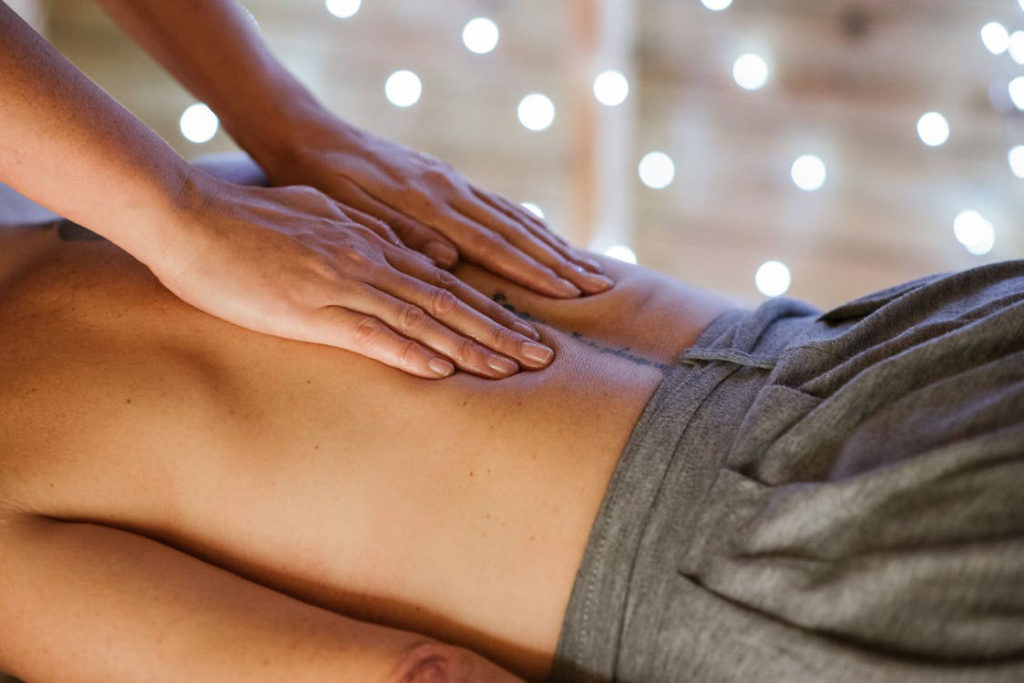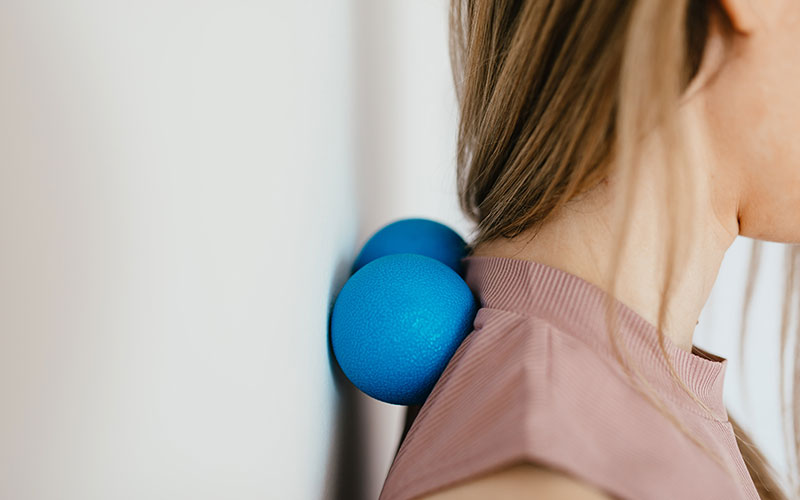Physiotherapist
Masters of Science in Physical Therapy
As a physiotherapist, my clients often explain that they feel “all knotted up” or that they are experiencing pain due to muscle knots. It’s less common that clients know what knots are or what causes them.
In this article, I will explain what muscle knots really are, how they are formed, and some treatments that can help relieve the pain that they cause.
What are muscle knots?
Knots are made up of tight muscle fibers or bunched up fascia, which are bands or sheets of connective tissue.
From a health professional perspective, muscle knots are understood as, “hyperirritable spots in muscle or fascial tissue [and are known as] myofascial trigger points.” (1)
Muscle knots are often very tender or feel achy when touched or massaged.
Where do knots commonly form?
Myofascial trigger points can develop anywhere in the body where there is muscle or fascia. People most commonly experience muscle knots in following areas:
- Neck and shoulders, with the upper trapezius or “traps” being the most common
- Lower back and glutes
- Outer thighs (IT bands)
- Calves
- Shins
How to release muscle knots
The pain caused by tight muscles can affect your wellbeing. Fortunately, there are some things you can do to manage pain caused by muscle knots.
Stretching and massage work well to release tension and reduce pain.
If you struggle with plantar fasciitis and calf tightness, a good way to release “knots” is use a lacrosse ball (or tennis ball) to massage the plantar fascia – which is located at the bottom of the foot below the heel. Simply roll the bottom of your foot over the ball applying some gentle pressure.
As another example, if you struggle with pain in your lower back and glutes, you can use the same lacrosse or tennis ball to relieve tightness. Simply:

- Lie on your back on a carpet or yoga mat.
- Place the ball under the tight areas
- Move forward and back to make the ball roll under the muscle.
- Breathe, be gentle and enjoy the massage.
Because muscle knots can form anywhere there is muscle or fascia, these examples won’t apply to all. To determine the best way to treat tightness and pain it’s important to understand that not all knots are created equal.
Why is the muscle ‘knotted’ in the first place?
To accurately treat muscle tightness, it’s important to understand the reason the muscle is tight or fascia is bunched.
It is equally common for muscle to be tight because it is weak and neurologically underactive as it is for it to be caused by overuse.
When the muscle is tight because of weakness, releasing the tightness may make pain worse. In these cases, the muscle does not need to be released, it needs to be strengthened.
The best way to determine if the tightness and pain that you’re experiencing is caused by weakness is through manual muscle testing, which is done by physiotherapists.
Working with a physiotherapist can help determine the cause of muscle knots. Common causes of muscle knots include, but are not limited to:
- Stress (physical, mental, and emotional)
- Repetitive strain or overuse
- Muscle weakness
- Poor posture
- Prolonged sitting or inactivity (working at a desk, sedentary lifestyle)
- Direct trauma: fall, motor vehicle accident, sports injury, etc.

How a physiotherapist can help
The most efficient and safe way to get back to living a pain-free life is by working with a professional. Physical Therapists (PT) and Massage Therapists (RMT) have a wide range of pain-relieving techniques, including, but not limited to:
- Therapeutic massage
- Therapeutic stretching techniques
- Soft Tissue Release or Active Release Therapy (STR/ART)
- Fascial Stretch Therapy (FST)
- Foam rolling/lacrosse ball rolling
- Dry-needling or acupuncture
- Low level laser therapy
- Postural strengthening programs
Other techniques:
- Heat therapy
- Stress management, such as deep breathing techniques
- Epsom Salt baths
It’s important to note, bone loss will not appear in an x-ray until 50% of it has already been lost. Osteoporosis can be easily diagnosed using BMD (Bone mineral densitometry) tests or Dexa scans.
Conclusion
The pain caused by muscle knots can be difficult to manage. Fortunately, you can relieve your symptoms and return to pain-free movement by practicing at-home massage techniques.
If you’re finding it difficult to relieve your pain on your own, an NKT trained physiotherapist can assess the function of your muscle, determine why it is tight, and prescribe an appropriate treatment or home exercise program.
Begin Your Journey with Us
If you’re finding it challenging to get started on your journey, feel free to reach out to us for a complimentary consultation. We would be more than happy to offer some guidance to help you move forward. Sometimes taking the first step is the hardest, so don’t hesitate to get some help to kickstart the process. We all start somewhere.

